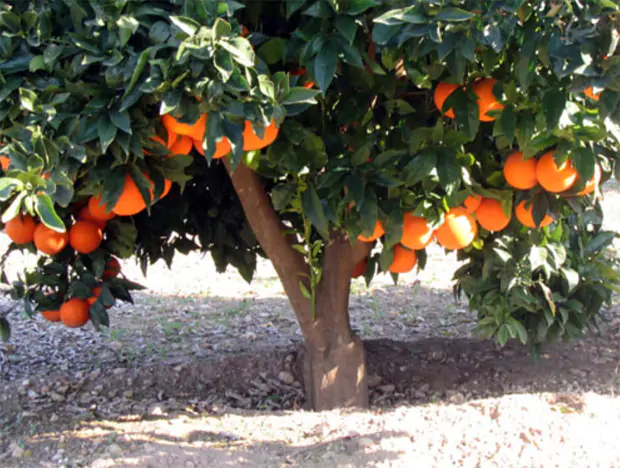Agriculture was the basis of Spanish economy until 1960s but nowadays it employs only 5% of the workforce. The main crops are wheat, barley, sugar beets, corn, potatoes, rye, oat, rice, tomatoes and onion. The vast vineyards and citrus and olive groves are also economically important. In 2005 the annual production of cereals was 14 million tonnes, of which 8 million tonnes was barley. The annual production of other important produce is the following: 6.7 million tonnes of sugar beets, 2.6 million tonnes of potatoes, 5.9 million tonnes of grapes, 3.9 million tonnes of tomatoes, almost 3 million tonnes of oranges and around 1 million tonnes of onion.

Oranges, tangerines and lemons are grown in the regions of: Valencia and Murcia. Almonds- adapt very well to different conditions. Apples and bananas- are characteristic for Asturias and part of the Basque Country. Orchard fruit- occur in the autonomous communities of Andalusia, Aragon, La Rioja, Catalonia, Extremadura, Valencia and Murcia.
Grown in the regions of: Aragon, Catalonia and Navarre with the use of both traditional techniques and the latest technology. The most important ones are: tomatoes, peppers, cucumbers, lettuce, garlic, onions, aubergines, zucchinis and celery.

Due to the climate and topographic conditions the majority of cultivation occurs on dry land. The provinces situated by the Mediterranean Sea have had irrigation systems for many years. Thanks to that, a lot of terrains that used to be arid, have become one of the most productive terrains in Spain and greenhouse cultivation is a common practice. In the Ebro Delta there is a special irrigation system which is a combination of irrigation and a hydroelectric power plant. The vast areas of Extremadura are irrigated by the water from the river Guadiana through irrigation systems funded by the government programmes. Less complex irrigation systems are used mainly in the humid areas and in the orchard zones of Murcia and Valencia.